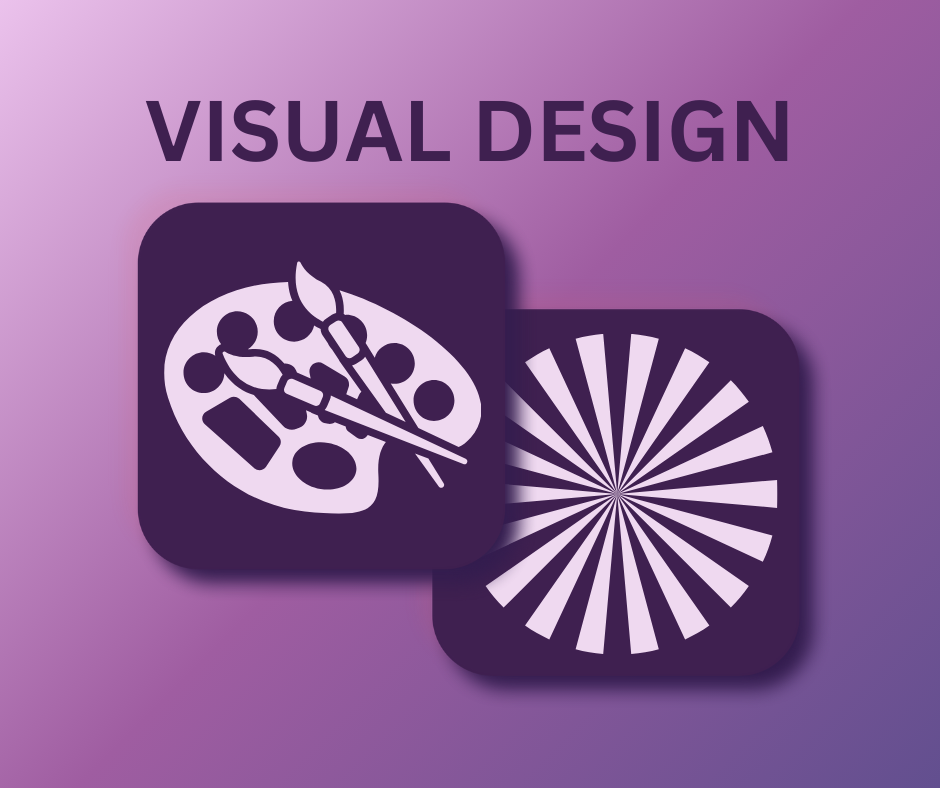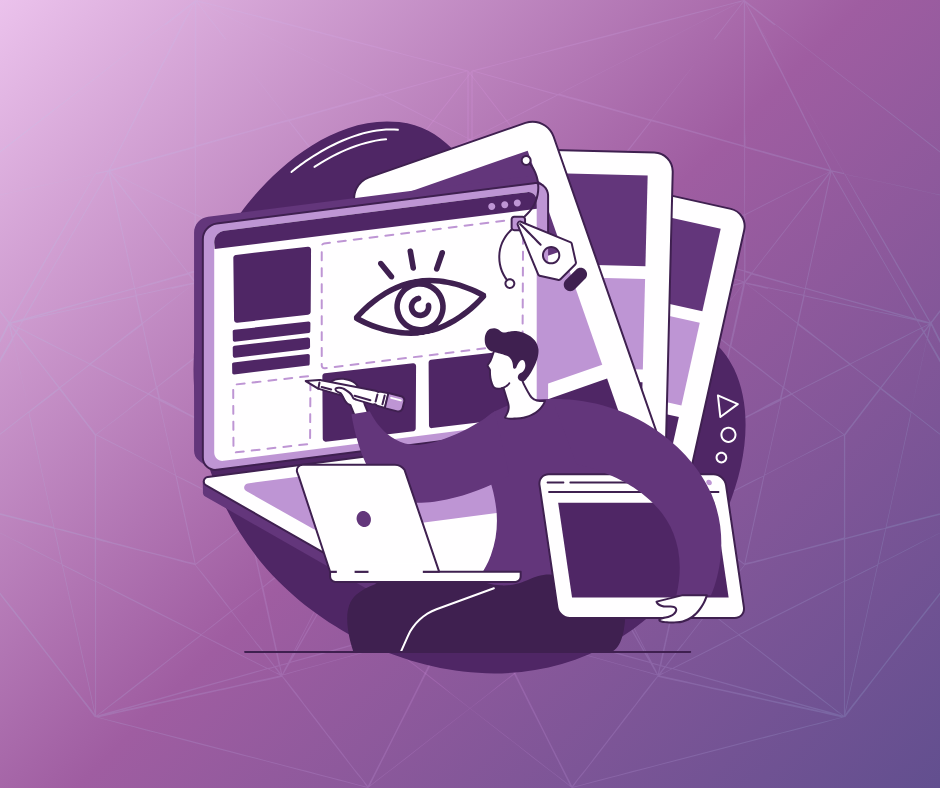Discover the Key Visual Design Methods
Visual design has become more important than ever in today's world, which increasingly relies on social media and digital content. We are exposed to vast amounts of visual information every day, making it crucial for our designs to stand out from the crowd.
In this article, we will discuss the key visual design techniques and how to use them to achieve the best results. The Concept of Visual Design

Visual design
Is the process of creating designs that use visual elements and principles to evoke emotions and convey ideas it also involves the use of colours, typography, patterns, shapes, and images to create appealing and effective designs.
Visual design is applied in a wide range of fields, including graphic design, interior design, industrial design, marketing, and communications.
The Importance of Visual Design
Visual design is important because it influences how people interact with products, services, and messages. Effective visual design can help capture attention, convey information, and create a positive experience.
Principles of Visual Design
The principles of visual design are the rules that guide how visual elements are arranged and organized in a design. They are essential for creating engaging and effective designs
• Balance:
Refers to how visual elements are distributed in the design. Balance can be symmetrical, where opposing parts of the design are equal in visual weight, or asymmetrical, where opposing parts differ in visual weight.
• Emphasis:
Refers to how attention is drawn to a specific element in the design. Emphasis can be achieved using a larger size, a brighter colour, or a more prominent position.
• Hierarchy:
Refers to the organization of visual elements in the design according to their importance. The most important element should be the most attention-grabbing, followed by the next most important element.
• Contrast:
Refers to the use of differences between visual elements to create visual interest. Contrast can be applied in colour, shape, size, or direction.
• Proximity:
Refers to the use of proportions and balanced relationships between visual elements. Consistency helps create designs that are comfortable and easy to understand.
• Repetition:
Refers to the use of the same visual elements repeatedly to create a sense of unity and coherence in the design. Repetition can also be used to establish a pattern or rhythm.
Additionally, combining visual design principles can result in more attractive and effective designs.

Elements of Visual Design
• Point:
The smallest visual unit, which can be a solid or empty point. Points can be used to attract attention, create rhythm, or highlight details.
• Line:
A series of connected points. Lines can be straight, curved, or dashed. They can be used to create shapes, define boundaries, or establish a sense of movement or direction.
· Form:
It is a closed area enclosed by lines. Shapes can be geometric, organic, or abstract. Shapes can be used to create structure, organize, or express emotions.
· Colour:
It is a visual phenomenon that results from the interaction of light with the eye. Colours can be used to create a mood, attract attention, or highlight details.
· Pattern:
It is the repetition of an element or a group of elements. Patterns can be used to create structure, organize, or express emotions.
· Size:
It refers to the dimensions of an element. Size can be used to create structure, organize, or express emotions.

Visual Design Applications
• Graphic Design:
Visual design is used in creating logos, posters, visual identities, and both digital and print advertising designs.
• Interior Design:
Visual design is used in planning and decorating the interior spaces of homes, offices, hotels, and retail stores to create a comfortable and beautiful visual experience.
• Industrial Design:
Visual design is utilized in the design of products, devices, and equipment to ensure both functional and aesthetic qualities of the product.
• Marketing:
Visual design is used in creating marketing materials such as advertisements, websites, and brochures to capture the audience's attention and promote a product or service.
• Communication:
Visual design is employed in designing and organizing information and content in innovative and appealing ways to achieve a greater impact and effectively convey the message.
• Interactive Interfaces:
Visual design is used in designing user interfaces for mobile applications and websites to enhance the user experience and ensure ease of use.

Examples of Visual Design Applications
• Adobe Photoshop:
This is the most famous application in the design world, offering a wide range of tools and features for photo editing and creating unique designs.
• Adobe Illustrator:
This application is used for creating illustrations and logos. It is known for its ability to edit images with high quality and scale them without losing resolution.
• Canva:
This user-friendly application is ideal for beginners, providing ready-made templates and simplified editing tools to create attractive designs.
• Sketch:
This application is popular among digital designers and is widely used for designing user interfaces and identity designs.
• Figma:
This application is an online collaborative design tool that allows design teams to work together in real-time and share feedback and comments.
• InVision:
This application is used to create interactive prototypes of designs and test them before the actual implementation.
Conclusion
There are no fixed rules in visual design; rather, there is continuous innovation and exploration of new techniques. By consistently utilizing these methods and design experiences, designers can improve their skills and achieve a greater impact in their designs.



